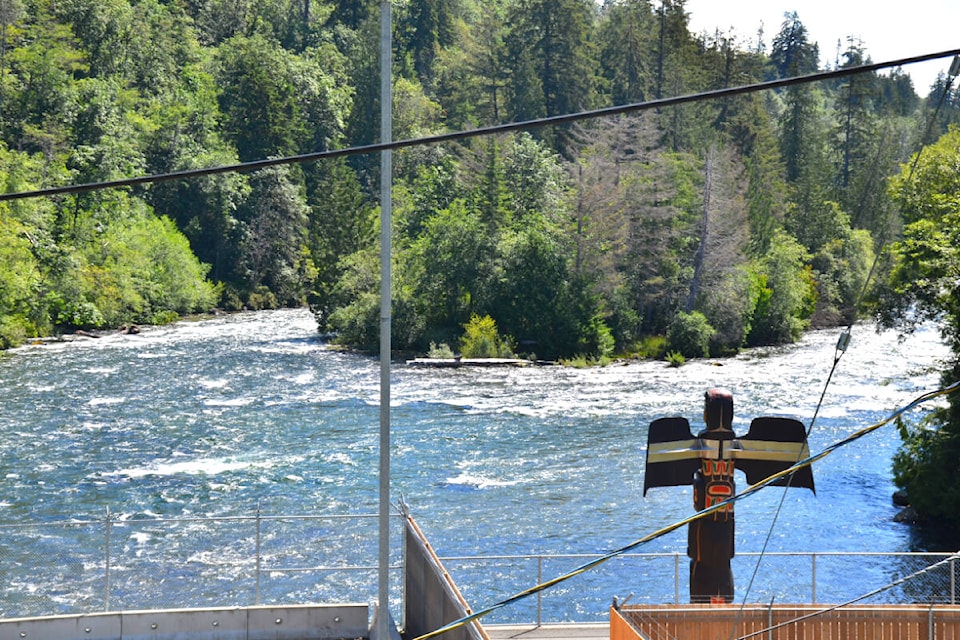Water levels in the Upper Campbell Reservoir/Buttle Lake system this summer are forecast to be the highest since 2017, according to BC Hydro update
In addition to higher reservoir levels, the power utility plans to maintain the flow rate in the Campbell River to a more normal rate compared to recent years when it has been lower than preferred.
“After seeing precipitation since April, to-date, that’s about 180% of normal, and the much improved water supply conditions, the watershed reservoirs and the river conditions may be about normal this summer,” BC Hydro spokesperson Stephen Watson said. “Our June to September water supply forecast is for water inflows to be about 117 per cent of normal. The overall February to September water supply forecast, as of June, is to be about 94 per cent of normal.”
In the last four years, BC Hydro has moved the Campbell River flow downward in June or even May given the drier conditions and to conserve water, but this year, the river flow rate has been where it should be to July 1 for the salmon out-migration period.
“There are some river recreation users that may have become used to the lower flows in the spring though this lower river flow period should be from July to September,” Watson said.
BC Hydro plans to reduce the water discharges from the John Hart facilities from 100 cubic metres per second (m3/s) down to 65 m3/s on July 1. From there the flows will be reduced to 55 m3/s on July 7 and eventually down to 40 m3/s on July 12. There is a potential, depending on the snowmelt rate and potential summer rain, that the rate may only go down to the 50 to 55 m3/s range.
Typically, the river flow in the summer is around 35 m3/s. The discharges from the John Hart hydroelectric facilities can range from about 128 m3/s at full power generation down 28 m3/s in the summer. The upstream Strathcona and Ladore powerhouses water discharges generally run in tandem with John Hart.
For reservoir recreation, the Upper Campbell Reservoir/Buttle Lake summer recreation target is elevation 217 metres to 220.5 metres above sea level, with 219 metres generally being ideal. The Upper Campbell Reservoir/Buttle Lake, upstream of the Strathcona Dam, is currently at about 217.6 metres and rising. The rate that the water levels will rise is dependent on how warm the conditions are, how fast the snow melts, and how much additional precipitation the watershed receives.
There is still about 750 mm of snow-to-water equivalent yet to melt in the upper watershed. This summer the reservoir may hit a high in the 219 m range in mid to late July. This is the highest forecasted summer reservoir level since 2017, Watson said.
Lower Campbell Reservoir/McIvor Lake, upstream of the Ladore Dam, is forecast to be within its preferred summer recreation zone of 176.5 metres to 177.5 metres. The current level is about 177.0 metres.
RELATED: BC Hydro updates Campbell River water supply forecast
